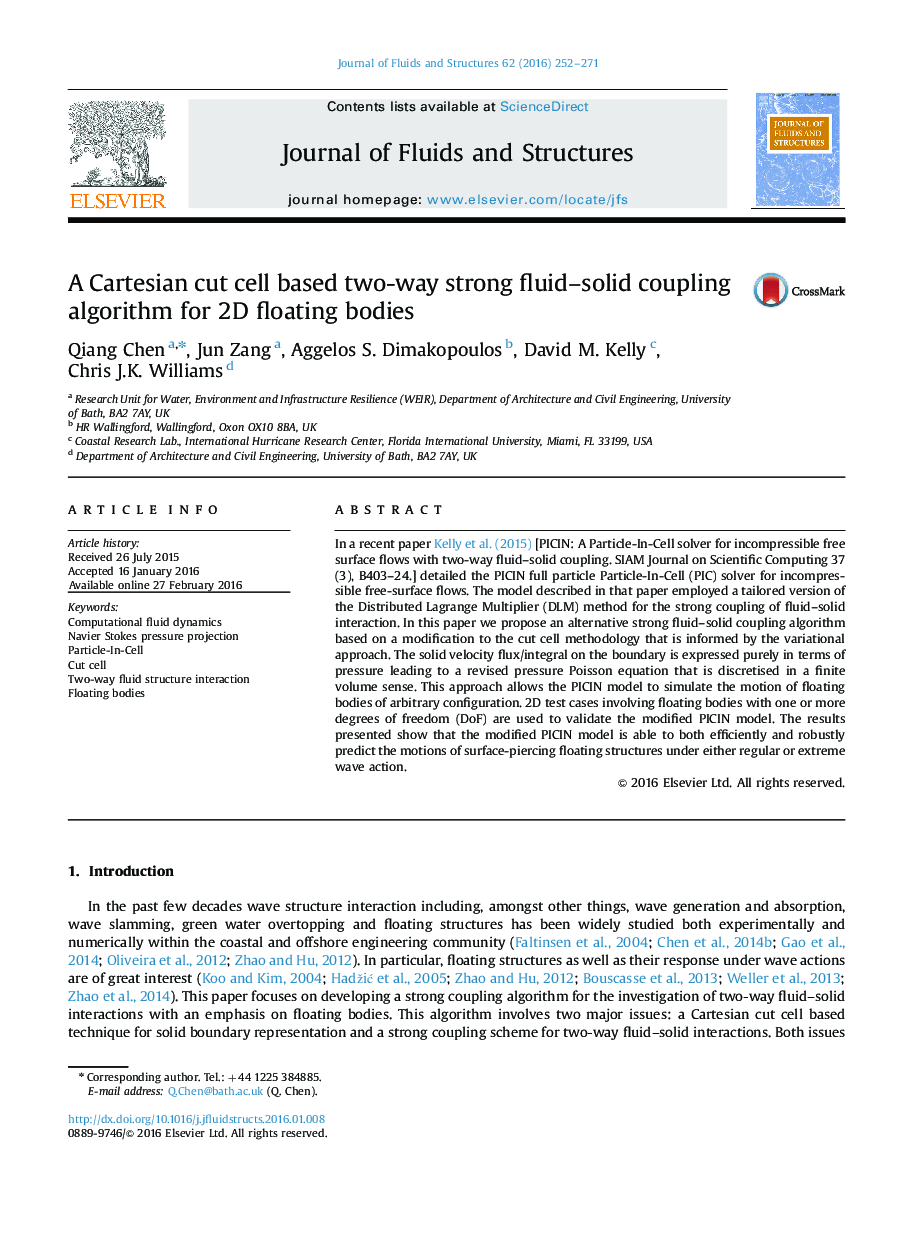| Article ID | Journal | Published Year | Pages | File Type |
|---|---|---|---|---|
| 792272 | Journal of Fluids and Structures | 2016 | 20 Pages |
•A Cartesian cut cell based strong fluid–solid coupling algorithm is proposed.•The coupling scheme is developed within the Particle-In-Cell framework.•The model is validated in simulating (surface piercing) floating bodies.
In a recent paper Kelly et al. (2015) [PICIN: A Particle-In-Cell solver for incompressible free surface flows with two-way fluid–solid coupling. SIAM Journal on Scientific Computing 37 (3), B403–24.] detailed the PICIN full particle Particle-In-Cell (PIC) solver for incompressible free-surface flows. The model described in that paper employed a tailored version of the Distributed Lagrange Multiplier (DLM) method for the strong coupling of fluid–solid interaction. In this paper we propose an alternative strong fluid–solid coupling algorithm based on a modification to the cut cell methodology that is informed by the variational approach. The solid velocity flux/integral on the boundary is expressed purely in terms of pressure leading to a revised pressure Poisson equation that is discretised in a finite volume sense. This approach allows the PICIN model to simulate the motion of floating bodies of arbitrary configuration. 2D test cases involving floating bodies with one or more degrees of freedom (DoF) are used to validate the modified PICIN model. The results presented show that the modified PICIN model is able to both efficiently and robustly predict the motions of surface-piercing floating structures under either regular or extreme wave action.
